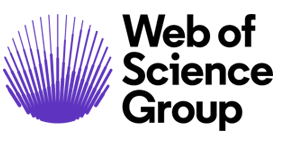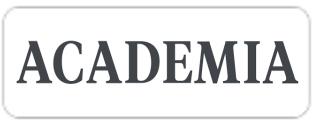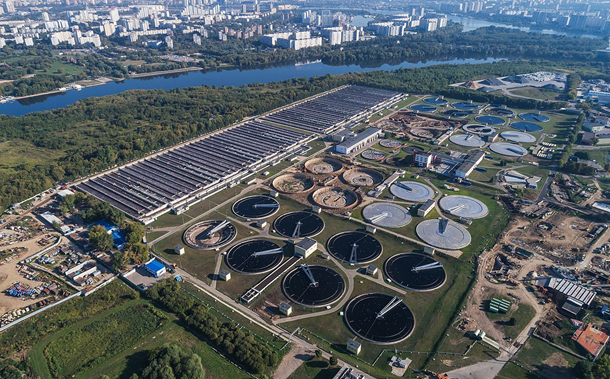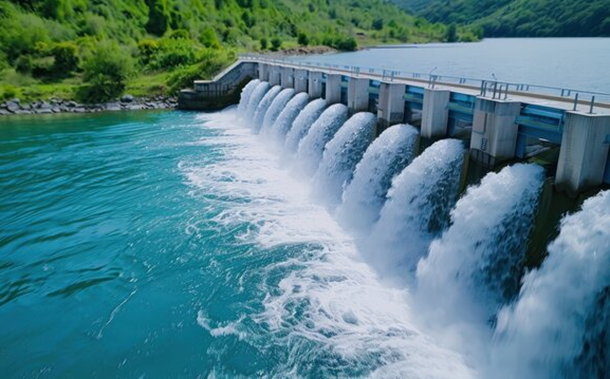Comparison of Multi-Objective Metaheuristics for Discrete Optimization of Steel Trusses Using Direct Analysis
Downloads
Doi:10.28991/CEJ-2024-010-12-07
Full Text:PDF
Downloads
[2] Thai, H. T., & Kim, S. E. (2009). Practical advanced analysis software for nonlinear inelastic analysis of space steel structures. Advances in Engineering Software, 40(9), 786–797. doi:10.1016/j.advengsoft.2009.02.001.
[3] Sheng-Xue, H. (2023). Truss optimization with frequency constraints using the medalist learning algorithm. Structures, 55, 1–15. doi:10.1016/j.istruc.2023.06.014.
[4] Ouardani, A. El, & Tbatou, T. (2024). Seismic Isolators Layout Optimization Using Genetic Algorithm Within the Pymoo Framework. Civil Engineering Journal (Iran), 10(8), 2517–2535. doi:10.28991/CEJ-2024-010-08-07.
[5] Altay, O., Cetindemir, O., & Aydogdu, I. (2024). Size optimization of planar truss systems using the modified salp swarm algorithm. Engineering Optimization, 56(4), 469–485. doi:10.1080/0305215X.2022.2160449.
[6] Kaveh, A., & Hosseini, S. M. (2022). Improved Bat Algorithm Based on Doppler Effect for Optimal Design of Special Truss Structures. Journal of Computing in Civil Engineering, 36(6), 4022028. doi:10.1061/(asce)cp.1943-5487.0001042.
[7] Nguyen, M. N., Hoang, V. N., & Lee, D. (2023). Multiscale topology optimization with stress, buckling and dynamic constraints using adaptive geometric components. Thin-Walled Structures, 183, 110405. doi:10.1016/j.tws.2022.110405.
[8] Yasin, A. A., Awwad, M. T., Malkawi, A. B., Maraqa, F. R., & Alomari, J. A. (2023). Optimization of Tuff Stones Content in Lightweight Concrete Using Artificial Neural Networks. Civil Engineering Journal (Iran), 9(11), 2823–2833. doi:10.28991/CEJ-2023-09-11-013.
[9] Contreras-Bejarano, O., & Villalba-Morales, J. D. (2024). On the use of the differential evolution algorithm for truss-type structures optimization. Applied Soft Computing, 161, 111372. doi:10.1016/j.asoc.2024.111372.
[10] Hajela, P., & Lee, E. (1995). Genetic algorithms in truss topological optimization. International Journal of Solids and Structures, 32(22), 3341–3357. doi:10.1016/0020-7683(94)00306-H.
[11] Bennage, W. A., & Dhingra, A. K. (1995). Optimization of truss topology using tabu search. International Journal for Numerical Methods in Engineering, 38(23), 4035–4052. doi:10.1002/nme.1620382308.
[12] Lamberti, L. (2008). An efficient simulated annealing algorithm for design optimization of truss structures. Computers & Structures, 86(19–20), 1936–1953. doi:10.1016/j.compstruc.2008.02.004.
[13] Serra, M., & Venini, P. (2006). On some applications of ant colony optimization metaheuristic to plane truss optimization. Structural and Multidisciplinary Optimization, 32(6), 499–506. doi:10.1007/s00158-006-0042-x.
[14] Schutte, J. F., & Groenwold, A. A. (2003). Sizing design of truss structures using particle swarms. Structural and Multidisciplinary Optimization, 25(4), 261–269. doi:10.1007/s00158-003-0316-5.
[15] Landa Becerra, R., & Coello, C. A. C. (2006). Cultured differential evolution for constrained optimization. Computer Methods in Applied Mechanics and Engineering, 195(33–36), 4303–4322. doi:10.1016/j.cma.2005.09.006.
[16] Degertekin, S. O., Lamberti, L., & Ugur, I. B. (2018). Sizing, layout and topology design optimization of truss structures using the Jaya algorithm. Applied Soft Computing Journal, 70, 903–928. doi:10.1016/j.asoc.2017.10.001.
[17] Pierezan, J., dos Santos Coelho, L., Cocco Mariani, V., Hochsteiner de Vasconcelos Segundo, E., & Prayogo, D. (2021). Chaotic coyote algorithm applied to truss optimization problems. Computers & Structures, 242, 106353. doi:10.1016/j.compstruc.2020.106353.
[18] Kaveh, A., & Mahdavi, V. R. (2015). Colliding bodies optimization for size and topology optimization of truss structures. Structural Engineering and Mechanics, 53(5), 847–865. doi:10.12989/sem.2015.53.5.847.
[19] Madah, H., & Amir, O. (2017). Truss optimization with buckling considerations using geometrically nonlinear beam modeling. Computers & Structures, 192, 233–247. doi:10.1016/j.compstruc.2017.07.023.
[20] Missoum, S., Gürdal, Z., & Gu, W. (2002). Optimization of nonlinear trusses using a displacement-based approach. Structural and Multidisciplinary Optimization, 23(3), 214–221. doi:10.1007/s00158-002-0179-1.
[21] Hrinda, G. A., & Nguyen, D. T. (2008). Optimization of stability-constrained geometrically nonlinear shallow trusses using an arc length sparse method with a strain energy density approach. Finite Elements in Analysis and Design, 44(15), 933–950. doi:10.1016/j.finel.2008.07.004.
[22] Kameshki, E. S., & Saka, M. P. (2007). Optimum geometry design of nonlinear braced domes using genetic algorithm. Computers and Structures, 85(1–2), 71–79. doi:10.1016/j.compstruc.2006.09.002.
[23] Martinez, S. Z., & Coello, C. A. C. (2014). A multi-objective evolutionary algorithm based on decomposition for constrained multi-objective optimization. IEEE Congress on Evolutionary Computation (CEC), 429–436. doi:10.1109/cec.2014.6900645.
[24] Deb, K., Agrawal, S., Pratap, A., Meyarivan, T. (2000). A Fast Elitist Non-dominated Sorting Genetic Algorithm for Multi-objective Optimization: NSGA-II. Parallel Problem Solving from Nature PPSN VI, PPSN 2000. Lecture Notes in Computer Science, 1917. Springer, Berlin, Germany. doi:10.1007/3-540-45356-3_83.
[25] Sarker, R., Liang, K. H., & Newton, C. (2002). A new multiobjective evolutionary algorithm. European Journal of Operational Research, 140(1), 12–23. doi:10.1016/S0377-2217(01)00190-4.
[26] Kukkonen, S., & Lampinen, J. (2005). GDE3: The third Evolution Step of Generalized Differential Evolution. 2005 IEEE Congress on Evolutionary Computation, 1, 443–450. doi:10.1109/cec.2005.1554717.
[27] Gholizadeh, S., & Fattahi, F. (2021). Multi-objective design optimization of steel moment frames considering seismic collapse safety. Engineering with Computers, 37(2), 1315–1328. doi:10.1007/s00366-019-00886-y.
[28] Eid, H. F., Garcia-Hernandez, L., & Abraham, A. (2022). Spiral water cycle algorithm for solving multi-objective optimization and truss optimization problems. Engineering with Computers, 38, 963–973. doi:10.1007/s00366-020-01237-y.
[29] Kaveh, A., & Ilchi Ghazaan, M. (2020). A new VPS-based algorithm for multi-objective optimization problems. Engineering with Computers, 36(3), 1029–1040. doi:10.1007/s00366-019-00747-8.
[30] Lemonge, A. C. C., Carvalho, J. P. G., Hallak, P. H., & Vargas, D. E. C. (2021). Multi-objective truss structural optimization considering natural frequencies of vibration and global stability. Expert Systems with Applications, 165, 113777. doi:10.1016/j.eswa.2020.113777.
[31] Ho-Huu, V., Duong-Gia, D., Vo-Duy, T., Le-Duc, T., & Nguyen-Thoi, T. (2018). An efficient combination of multi-objective evolutionary optimization and reliability analysis for reliability-based design optimization of truss structures. Expert Systems with Applications, 102, 262–272. doi:10.1016/j.eswa.2018.02.040.
[32] Cao, T. S., Pham, H. A., & Truong, V. H. (2024). An efficient algorithm for multi-objective structural optimization problems using an improved pbest-based differential evolution algorithm. Advances in Engineering Software, 197, 103752. doi:10.1016/j.advengsoft.2024.103752.
[33] Cao, T. S., Nguyen, T. T. T., Nguyen, V. S., Truong, V. H., & Nguyen, H. H. (2023). Performance of Six Metaheuristic Algorithms for Multi-Objective Optimization of Nonlinear Inelastic Steel Trusses. Buildings, 13(4), 868. doi:10.3390/buildings13040868.
[34] Panagant, N., Pholdee, N., Bureerat, S., Yildiz, A. R., & Mirjalili, S. (2021). A Comparative Study of Recent Multi-objective Metaheuristics for Solving Constrained Truss Optimisation Problems. Archives of Computational Methods in Engineering, 28(5), 4031–4047. doi:10.1007/s11831-021-09531-8.
[35] Panagant, N., Kumar, S., Tejani, G. G., Pholdee, N., & Bureerat, S. (2023). Many"‘objective meta-heuristic methods for solving constrained truss optimisation problems: A comparative analysis. MethodsX, 10, 102181. doi:10.1016/j.mex.2023.102181.
[36] Nguyen, H. H., & Truong, V. H. (2024). Machine Learning-based prediction of seismic lateral deflection of steel trusses using nonlinear time-history analysis. Structures, 69, 107369. doi:10.1016/j.istruc.2024.107369.
[37] Truong, V. H., Tangaramvong, S., & Papazafeiropoulos, G. (2024). An efficient LightGBM-based differential evolution method for nonlinear inelastic truss optimization. Expert Systems with Applications, 237, 121530. doi:10.1016/j.eswa.2023.121530.
[38] Nguyen, Q.-B. (2024). An Efficient Framework for Optimization of Nonlinear Steel Trusses with Continuous Variables Using Lightgbm. International Journal of Geomate, 26(116). doi:10.21660/2024.116.4398.
[39] Blandford, G. E. (1996). Progressive failure analysis of inelastic space truss structures. Computers and Structures, 58(5), 981–990. doi:10.1016/0045-7949(95)00217-5.
[40] Yang, Y.-B., & Kuo, S.-R. (1994). Theory & Analysis of Nonlinear Framed Structures. Prentice Hall. Hoboken, United States.
[41] Yang, Y. Bin, & Shieh, M. S. (1990). Solution method for nonlinear problems with multiple critical points. AIAA Journal, 28(12), 2110–2116. doi:10.2514/3.10529.
[42] Srinivas, N., & Deb, K. (1994). Muiltiobjective Optimization Using Nondominated Sorting in Genetic Algorithms. Evolutionary Computation, 2(3), 221–248. doi:10.1162/evco.1994.2.3.221.
[43] Deb, K., & Agrawal, R. B. (1995). Simulated binary crossover for continuous search space. Complex systems, 9(2), 115-148.
[44] Zitzler, E., & Thiele, L. (1999). Multiobjective evolutionary algorithms: A comparative case study and the strength Pareto approach. IEEE Transactions on Evolutionary Computation, 3(4), 257–271. doi:10.1109/4235.797969.
[45] Zitzler, E., Laumanns, M., Thiele, L., et al. (2001). SPEA2: Improving the strength Pareto evolutionary algorithm. TIK Report, Computer Engineering and Networks Laboratory, ETH Zurich, Zürich, Switzerland. doi:10.3929/ethz-a-004284029.
[46] Zhang, Q., & Li, H. (2007). MOEA/D: A multiobjective evolutionary algorithm based on decomposition. IEEE Transactions on Evolutionary Computation, 11(6), 712–731. doi:10.1109/TEVC.2007.892759.
- Authors retain all copyrights. It is noticeable that authors will not be forced to sign any copyright transfer agreements.
- This work (including HTML and PDF Files) is licensed under a Creative Commons Attribution 4.0 International License.![]()














